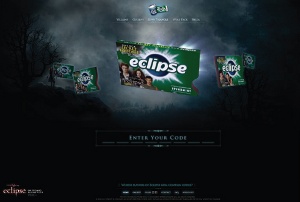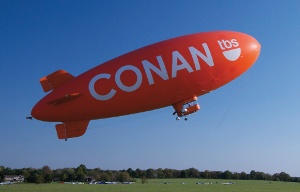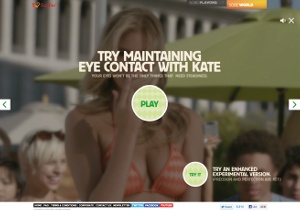Dive into digital media
It isn’t easy to persuade people to venture outside the familiar and jump headlong into the digital media rabbit hole to engage with your campaign. But get it right, and the pay-offs can be considerable
Digital media is, in many ways, an advertiser’s dream. A well thought out digital media campaign can engage an audience in a wonderfully intimate way. It can pander perfectly to their personal tastes, wants and needs; target them at exactly the right time and place and, most importantly, encourage participation with the brand or service in a way that feels natural, and not forced or invasive.
Traditional media is a very different beast. Whether it’s an ad in a magazine, a giant billboard or a broadcast TV spot, the premise is essentially the same: blanket exposure of the same creative, to as many eyeballs as possible. Broadly speaking, it’s like screaming at a crowd from a rooftop.

The Holy Grail is to conquer both worlds and, to use industry terminology, ‘convert’ a given percentage of that mass audience to the next level of digital engagement. Sometimes, it’s enough to encourage them to type in a URL, or perhaps scan a QR (quick response) code to unlock a simple digital treat. In other cases, the ambition is greater – contribution of user-generated content, for instance, or participation in a challenge or game.
So what does it take to persuade people who are used to traditional media channels to upgrade to the next level? For Dave Snyder, creative director at New York-based digital agency Firstborn, it really comes down to making any digital components totally integral to the concept, and not just a buzzword-laden bolt-on. “Right now, people are just sticking things like QR codes in the corner of an ad and hoping someone scans it. Guess what: they won’t,” he reasons.
“Bigger than this is an understanding of human behaviour and its implications on user experience,” he continues. “If you’re trying to do something with mobile in a place where the user doesn’t get reception, you aren’t thinking things through. I saw a poster on the subway platform the other day, and it had a QR code on it. That won’t work – no reception. Who didn’t think that through?”
Snyder gives another example of a campaign that almost got the traditional-to-digital crossover perfect – it was for toilet paper of all things. “You had to text in ‘over’ or ‘under’ regarding how you hang your toilet paper roll,” he explains. “Super simple. It made me laugh and tapped into a behaviour that we’re used to: text to vote. I texted, and was returned a link right away. Cool! But it took me to a Flash site that wouldn’t work on my iPhone. Lame. You must always think about the context.”

Context is king, as Matthew Jensen, creative lead at applied gaming specialist Natron Baxter confirms. “We assume that our audiences have a mobile phone – and increasingly, a smart phone – on them at all times, and use that as our primary point of entry to the digital component,” he says. “But it’s invaluable to understand when the transition from traditional to digital media will be most desirable, and most convenient,” he adds.
Having developed game-based campaigns for clients including General Electric, the American Heart Association and the World Bank, Natron Baxter has a tried-and-trusted creative process. “We try to first ‘disassemble the radio’ – scrutinise the environment, the contexts of play, and various personas – to isolate and identify the moving parts and interactions,” explains Jensen. “Generally, when we have a clear project objective, or behaviour to encourage, it becomes obvious which key interactions should inform our digital strategy.”
In some cases, a brief might dictate that a certain technology or framework must be used and Jensen insists that it’s possible to turn such constraints in your favour. “Embracing limited customisation or an impenetrable firewall might actually inspire a more elegant, more appropriate strategy. The constraints of Twitter, for instance, make for interesting opportunities within an interaction paradigm already familiar to millions of users,” he says.
“At the other end of the spectrum, new technologies are imbued with such novelty that the designer can simply isolate and showcase the ‘different’ and float the story atop the mechanic. It’s a gimmick, no doubt, but it can work – early on, at least.”
But is there a danger of chasing shiny new technologies for the sake of it and ultimately missing the point? “Yes, shiny object syndrome is a problem,” admits Snyder, “but I don’t think we suffer from it. Clients drink the Kool-Aid more than we do, and that’s fuelled by what they read in the industry rags.”
He continues: “We are technologists, but we’re very pragmatic with our approach to technology. We actually spend a lot of time talking clients out of certain technologies. It’s important that we explore all the new, geeky stuff internally but a lot of that tech doesn’t have the penetration that it needs to make sense as part of a large campaign.”
Of course, this isn’t to say that, when used creatively, appropriately and integrally to the concept of a campaign, emerging technologies can’t make a genuine impact. “Whether it’s extremely familiar or extremely unfamiliar, a particular technology can still provide an opportunity in the design process,” insists Jensen. “In the case of the former, we rely on adoption and even fiddle with the interaction paradigm; in the case of the latter, we rely on the engagement power of novelty.” He cites the example of a shopper in a supermarket checkout line, with three idle minutes to fill, as an ideal target. “In that situation, an attractive digital ‘rabbit hole’ shouldn’t require much persuasion,” he says. “A QR code on top of a taxi, on the other hand, requires entirely too much inopportune effort.”

Andrew Zolty, co-founder and creative director at New York agency Breakfast, takes a slightly different tack in terms of the impact that a campaign with niche appeal can achieve. “Avoid trying to persuade people in the first place,” he shrugs. “Digital doesn’t always need to be engaged with directly by everyone. The most interesting part of Breakfast’s success is that so few people have seen, touched or engaged with our creations.”
With Turner Broadcasting, Johnson & Johnson and Google on the client list – and a People’s Voice Webby in 2011 for a Conan O’Brien promotional blimp that became the world’s first moving foursquare check-in location – Breakfast has its fair share of profile. For Zolty, the media exposure that a campaign receives can generate interest and awareness that far exceeds the people that the project itself can reach.
“It’s the simple fact that our ideas actually were built and exist that brought the spotlight on them,” he says. “Often the only engagement has come in the form of reading an article about our creations. This approach is more successful than any screen-only digital campaigns I’ve worked on.”
Lack of public familiarity with new tech can certainly limit widespread engagement with a campaign, but as Zolty points out, good press off the back of a dedicated few can go a long way. However, when you do tempt people to engage, and the experience doesn’t merit the effort, you’re fighting a losing battle.
Dave Snyder has an example. “I was just at the Talk to Me exhibit at MoMA. Every piece had a QR code on it but very few people in attendance actually scanned them,” he recalls. “I did, out of professional curiosity, and what I got wasn’t interesting enough to warrant another scan. This is part of the problem – the reward needs to be interesting, or you lose your audience. I would even speculate that one brand’s bad use of a new technology acts as a contagion on other uses of it. In my opinion, QR codes won’t go anywhere – Google Goggles or some other shape-recognition application will simply leapfrog it.”

It’s a subject about which Caspar Thykier, co-founder of image-recognition specialist Zappar feels strongly: “Augmented reality is a meaningless term in the real world,” he says. “In fact, I think it should be scrapped. No one knows what it is, and if they do then it’s likely they’ve had a dodgy webcam experience and have slightly written it off,” he explains.
Zappar enables smart image-based recognition on handheld devices, negating the need for an unwieldy QR code, and bridging the gap between the real and digital worlds in a more intuitive way. It has used the technology to add engaging digital interactivity to movie posters for Green Lantern and Harry Potter and the Deathly Hallows for its client Warner Brothers.
“We often get asked, ‘How will people know what to do, or be bothered to download the app?’” says Thykier. “Our answer is that it has ever been thus in marketing. Back in the day you had to cut out a coupon to respond to an ad, dial a toll-free number, jot down a web address, text a code, hit a red button or download a QR reader. People are happy to interact and actively engage, so long as the content and reward at the end of it stacks up.”
Illustration: Jack Hughes
Get the Creative Bloq Newsletter
Daily design news, reviews, how-tos and more, as picked by the editors.

Thank you for reading 5 articles this month* Join now for unlimited access
Enjoy your first month for just £1 / $1 / €1
*Read 5 free articles per month without a subscription

Join now for unlimited access
Try first month for just £1 / $1 / €1
The Creative Bloq team is made up of a group of design fans, and has changed and evolved since Creative Bloq began back in 2012. The current website team consists of eight full-time members of staff: Editor Georgia Coggan, Deputy Editor Rosie Hilder, Ecommerce Editor Beren Neale, Senior News Editor Daniel Piper, Editor, Digital Art and 3D Ian Dean, Tech Reviews Editor Erlingur Einarsson, Ecommerce Writer Beth Nicholls and Staff Writer Natalie Fear, as well as a roster of freelancers from around the world. The ImagineFX magazine team also pitch in, ensuring that content from leading digital art publication ImagineFX is represented on Creative Bloq.
